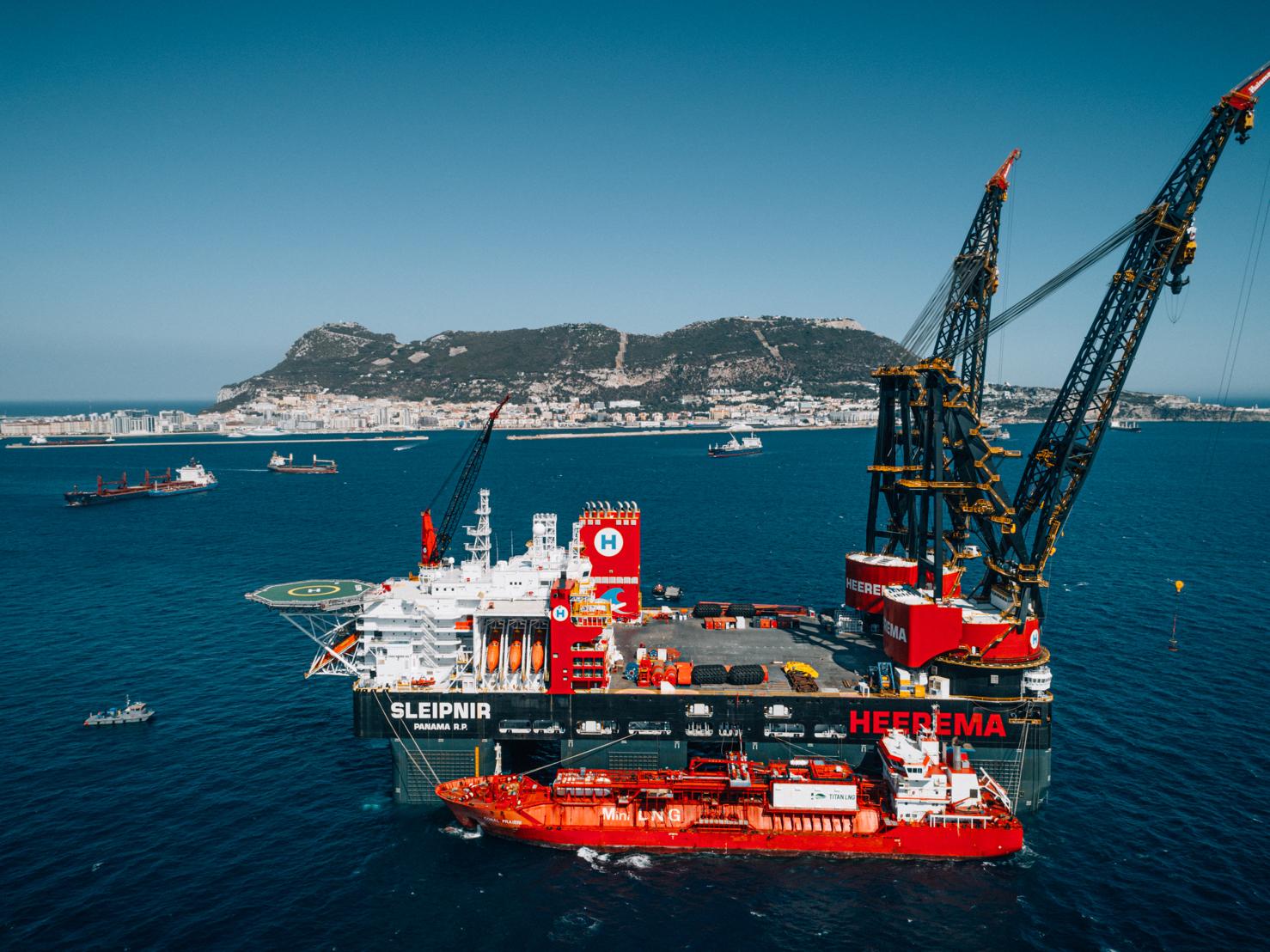
After successful validation, the SDM model is then used to calculate the motions at the Jacket Sensor (‘B’). The Synthetic Data Model (SDM) uses a Jonswap Spectrum to obtain the motions at the Motion Reference Unit (MRU, ‘A’) and the Control Point (‘B’) at the modelled SSCV Sleipnir, which is assumed as a rigid body.
#Heerema sleipnir software#
The hypotheses proposed in this research are further validated by the proposed validation tests in combination with a synthetic data model created in software tool Liftdyn. Overall, its concluded that the TF A2B Method works in principle, removing the need to consider inconvenient draft and forward speed. It is mathematically proven that the TF A2B Method can be used and with validation tests set up for unrestrained suspended transport it is shown that the required RAO’s can be obtained from in-house modeling software Liftdyn. The method can be used to find the required force transmissibility functions at location of the cranes that are most prone to fatigue: the welds at the crane boom pivots. To remove the inaccuracies introduced by both problems, the novel TF A2B Method is introduced. Then, literature research is done on the main two problems with any transport at sea: the inconvenient draft problem, and the forward speed problem. First, the kinematics, definitions and particulars of the system of interest – the vessel including crane and suspended jacket - are provided. This research explores the development of an accurate yet fast methodology to use measured vessel motions for a fatigue damage calculation in the cranes during suspended transport. Van Geel, Mark (TU Delft Mechanical, Maritime and Materials Engineering TU Delft Offshore and Dredging Engineering)

Motion analysis of suspended jacket transport with the Heerema SSCV Sleipnir: Comparison of model jacket motions vs actual jacket motions based on motion measurements and exploration of crane fatigue


 0 kommentar(er)
0 kommentar(er)
